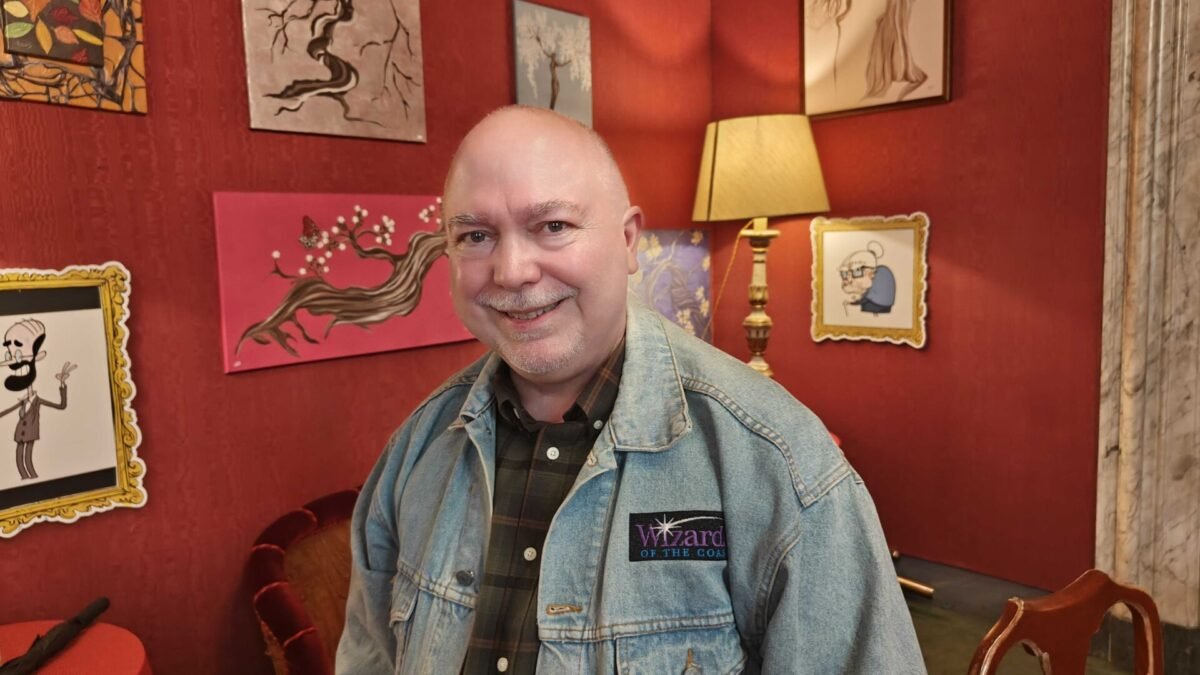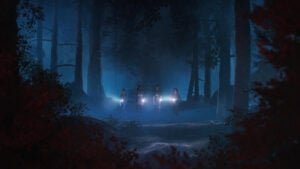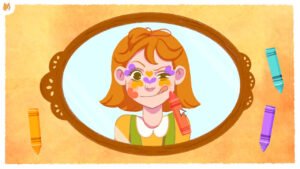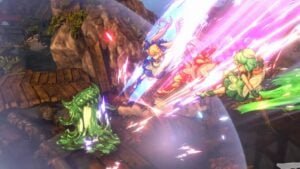It is hard to deny just how influential Peter Adkison is to the gaming industry gaming industry. Known for founding Wizards of the Coast and being the driving force behind the creation of Magic: The Gathering, he is a figure who helped shape the modern tabletop landscape we know today. As the CEO of Wizards of the Coast from 1993 to 2001, he played a pivotal role in the company’s rise to prominence as a major publisher in the hobby game industry.
Under his leadership, Wizards of the Coast not only achieved success with the creation of Magic: The Gathering, which revolutionized the collectible card game genre but also distributed Pokémon trading cards and acquired TSR, the publisher of Dungeons & Dragons, releasing a successful new edition.
In addition to his contributions to Wizards of the Coast, Adkison is the current owner of Gen Con, a significant annual game convention in the Midwest. His passion for gaming and his entrepreneurial spirit have left a lasting impact on the industry. In an exclusive interview, we had the opportunity to sit down with Peter Adkison to discuss his journey, the creation of Magic: The Gathering, his time at Wizards of the Coast, and the legacy of Gen Con.
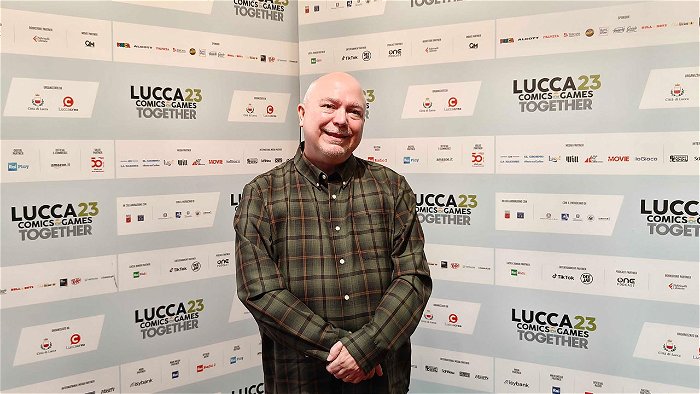
While at Lucca Comics & Games in Italy, CGMagazine was lucky enough to get some time to sit down with Peter on the 25th anniversary of Magic: The Gathering and talk about his career, his life, and the world he helped create. With gaming bigger than ever, Peter gives a look at how it all started and how the love of gaming has always been an important part of people’s identity.
So, just to start off, did you ever imagine when you started up Wizard of the Coast that the game you worked on would be this good?
Peter Adkison: Oh my god, no. No, I just started a game company because I wanted to be an entrepreneur. I wanted to run a company, start a company. And my two ideas were a game company or an IT servicing company. I followed my heart instead of what I thought would be a better business. I just wanted to produce role-playing game supplements.
Looking back now, what would you tell a younger you if you could go back and say this is what’s going to happen?
Peter Adkison: Oh, if I could go back to a younger me, I wouldn’t. Because everything turned out so well, I would be terrified of screwing it up. You know, like the butterfly effect, don’t tell younger Peter anything at all.
Is there anything looking back that you wished would have gone differently or happened faster or slower?
Peter Adkison: You’re talking about regrets.
I am indeed.
Peter Adkison: Very clever. In business, sometimes you make decisions that hurt other people, and that’s always the hardest. I made some decisions around art that were mistakes in terms of how I handled aspects related to art and artists. That’s the one thing I would fix if I could.

When we talk about art, Magic has so much to do with it. We got to sit down with some artists on some panels. Was art a big focus for you in the beginning, or did it become part of the process?
Peter Adkison: Oh, it was a huge focus for us. In fact, the original idea for Magic: the Gathering is the idea that I prodded Richard Garfield on when he said, hey, what sort of game would you like? I said I wanted to do a card game that had a fantasy or science fiction feel to it because I felt like I could get a lot of really good art at a reasonable price.
In the early 90s, it was hard for artists to find a way to publish colour art of fantasy because there was very little of it. If you were a geek in 1990, you knew all the pieces of colour art that existed because there were so few of them. There were book covers, calendars, and game covers, but the interiors of games were all black and white. But you would go to a game convention, like a science fiction fantasy convention, and there would just be art everywhere.
There’s great art. It’s like, man, this art’s not getting published. I think that we could do something about it. So, Magic had its roots in me wanting to publish a game with fantasy or science fiction art.
How important was it early on to make sure that the artist was featured, that you knew exactly who was on each card and that you were using them multiple times, not just one out of a bunch of cards?
Peter Adkison: It was crucial, and yes, Ramir Fors, who was the art director for Magic The Gathering at the beginning in the first few years, deserves the lion’s share of the credit for that. I mean, I was saying, yes, let’s do this. That sounds like a great idea. He saw this as a way of bringing more recognition to artists by making sure their names were on each card.
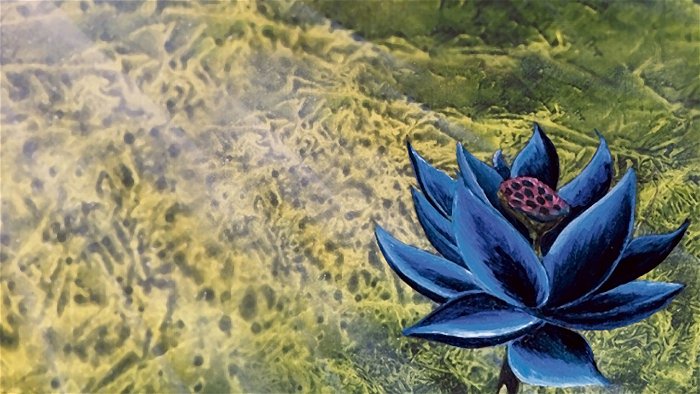
When you started out, did you ever think you’d be here celebrating the 30th anniversary of Magic in particular?
Peter Adkison: Before Magic came out, I wouldn’t have for the first couple of years of Magic. It takes a while before, you know, when you’re publishing a product that becomes a big hit, the first question is like, how big is it going to be? Then the next question is, is it just a fad, right? Will there be a 30th anniversary? Depends on whether or not the product—and I’m being kind of crass saying the product, this could be anything, right—is this going to be around 30 years?
It depends a lot on what that life cycle looks like. And so, I think it wasn’t probably until at least 10, the early odds, probably like when I sold the company, was probably, by that time, I was certainly looking at it and pitching it as an evergreen product. And so, while I wasn’t thinking of the 30th anniversary, somebody would have said, you’re going to be in Lucca for the 30th anniversary of Magic in Italy. I said, “oh, okay, that makes sense.”
What would you say to the new generation of Magic players?
Peter Adkison: Well, enjoy the game. It’s a game. Go out and enjoy it, have fun, and play it. And, you know, enjoy the period of being obsessed with it. I think it’s okay to give yourself permission to do that. We all do that.
We’re gamers, we’re geeks. Obsession is kind of part of the definition of being a geek. And it’s not just game geeks. It can be music geeks. It can be technology geeks. So enjoy that, but also remember that you have to make a living. You have to have a life. You have to have a path forward. Think of this as a process and enjoy the ride. And also, but never completely turn your back on it, you know.
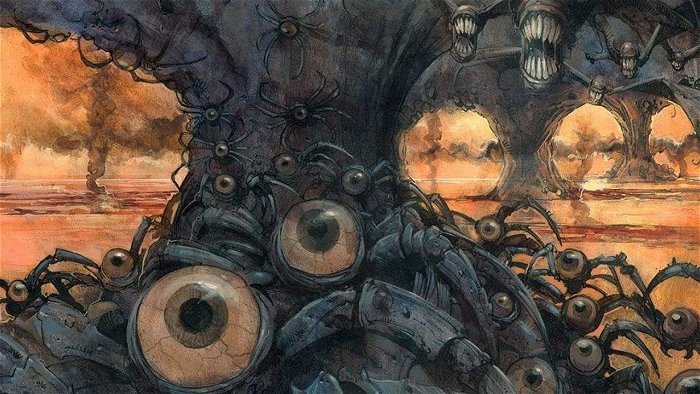
Did you ever think that you would see big celebrities out here promoting things that you were behind? Not just promoting, not even getting paid to promote, just telling everybody.
Peter Adkison: DMing Joe Manganiello on Sunday. I mean, we were always, this is an aspect of geek culture that I never saw coming. I never thought that geek culture would go away. I was afraid for a while that video games would eclipse tabletop games, as opposed to feeding tabletop games, which is what happened. But I think this shift in geek culture around 2014 is long in there, where all of a sudden you have major stars coming out and saying, yeah, we play D&D.
And on the note of video games feeding into it, does it ever bother you or maybe please you now that Magic is becoming an app and a mobile game along with other things of that nature?
Peter Adkison: That’s great. Sure. I mean, that’s what people want, right? I think the publisher gets to decide that, right? And they have access to a lot more data and market research and stuff. They’re more in touch with the current player base. I’m in touch with a player base that’s 30 years old, right? Don’t cater to us right now. I mean, you have to cater to the 14-year-olds.
Nice to see it evolve.
Peter Adkison: Yeah, absolutely. Absolutely. And, of course, you can always hold it. Don’t screw it up. Of course not. Please. But at the same time, we all have our own cards. We’re going to keep playing no matter what you do.
Well, on that note, Magic: The Gathering kind of started in the convention scenes early on. What is it like to see a convention like Lucca Comics & Games? 300,000 people, most of them probably know something you’ve done.
Peter Adkison: It’s quite intimidating. It’s pretty surreal, you know? I’m happy that it’s a reflection of how our culture as geeks has flourished and diversified. My favourite part of it is that it’s not just white guys. It’s like there are all shades of skin and all genders.
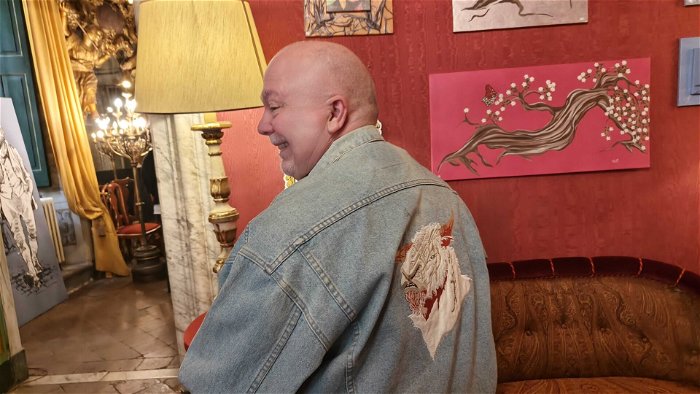
There are so many people out there who want to get into tabletop gaming, working on building their own companies similar to what you’ve done and what you’ve experienced. What advice would you give them to figure out if they want to be a part of this industry and to actually jump into it?
Peter Adkison: Oh, I hate this question. You want to be inspiring and encouraging, and at the same time, you’re like, man, there’s a lot of people doing that, you know? But I would say you have to be social media savvy these days. I would say put that at the top of your list. You gotta get out there and network and be part of the scene.
That’s where the scene is now. I mean, there are the big publishers and the big brands and stuff like that, but I think to start something new, the content’s got to be great. There’s a lot of great content.
That’s just like the price of admission. You’ve got to have good content in order to be successful in this industry, but there’s a lot of other good content. So you’ve got to figure out how to cultivate the fan garden, you know, get a following. It doesn’t have to be huge. If you can get a few thousand people and love what you do, then you’re in business.
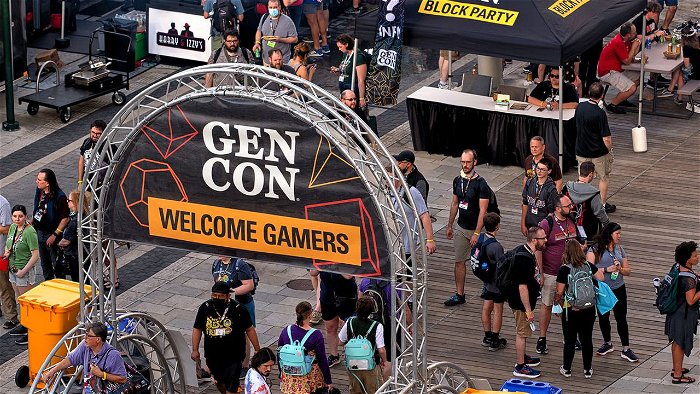
I just want to know personally, what’s your favourite thing to come out of Wizards of the Coast?
Peter Adkison: Oh, well. Gen Con, can I say that? Can I switch?
You can Say whatever you want!
Peter Adkison: I’m going to plug. So, on my way out the door, I ended up acquiring Gen Con, which Wizards owned as a result of the TSR acquisition with Dungeons & Dragons, which turned out to be the cherry on top. And I still own Gen Con, and it’s a fantastic convention—best 4 days in gaming. And now, the best 4 days of gaming all year long because we have a Twitch channel that’s doing well. It’s called Gen Con TV.
That’s actually what I do on a day-to-day basis these days. Even though I own Gen Con, I don’t run Gen Con on a day-to-day basis. I have a general manager who does that for me and does it much better than I could. But what I do on a day-to-day basis is run the Gen Con Twitch channel. And so we have a bunch of shows. So, if you know anyone who wants to produce content on Twitch…
You mean nerds? We know a few.
Peter Adkison: If you know people, you know. Yeah, I’m looking for independent producers who want to produce a Twitch show but don’t want the hassle.
A channel. Amazing.
Peter Adkison: So you can make a channel.
Oh my God, everybody’s going to hit you up now.
Peter Adkison: I’ve been very careful not to say it too loudly, but I need more content.
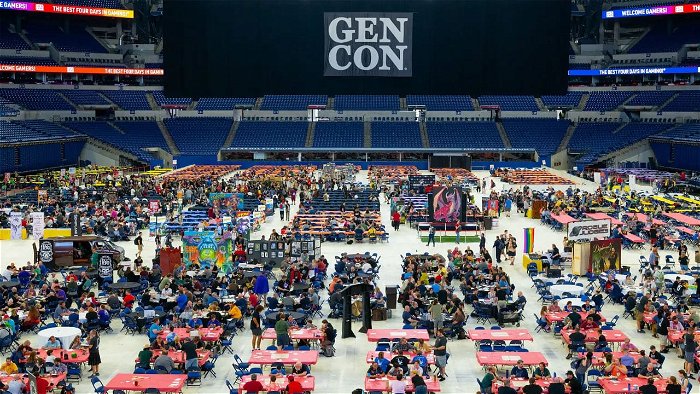
Selling Wizards of the Coast, how important was it to keep Gen Con to yourself at that end?
Peter Adkison: Well, I didn’t at that point. What happened was I sold everything. So, there was a brief moment where I had no place in the industry other than as somebody who used to do things. And then about a year later, on my way out the door, I said to the guy who replaced me,
“Listen, I can see the writing on the wall. I can really understand the business strategy. It’s really my gift. And parts of that business do not fit Hasbro’s strategy. And at some point, Hasbro is going to figure that out. And when they do, they’re going to divest those parts. Give me a call. I might be interested in buying something that they divest. And you’d have the advantage of being an informed buyer.”
Well, you’re trying to sell something. It can work for you or against you. So, about a year later, I got the call. I said, sure, Peter, you’re right, we’re selling 4 companies.
It never sucks to hear that you’re right.
Peter Adkison: I said are you interested in the magazines? No. Are you interested in the online business? No. Are you interested in the retail store? No. Are you interested in Gen Con? You’ll sell Gen Con? Yes, I’m very interested in Gen Con. Send me the financials. So yeah, that’s how it happened.
I have to ask, then, you were talking about how people now have to be social media savvy, Twitch savvy.
Peter Adkison: Or whatever, the next thing is savvy.
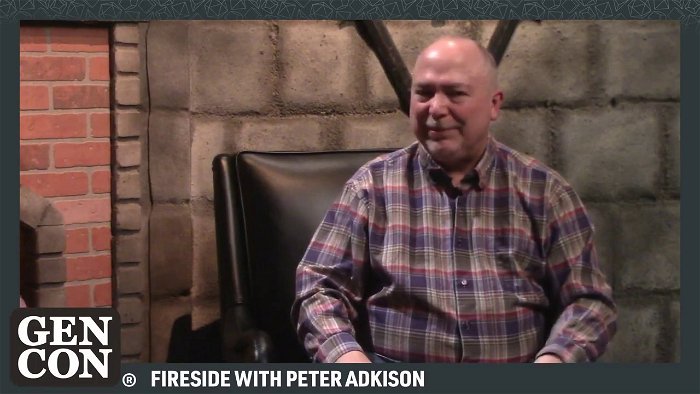
You’ve gone from making this physical game to running a Twitch channel. How does that work for you on a day-to-day basis? How was that transition?
Peter Adkison: I went through a period where I realized that everyone in my immediate family has a mental illness, dementia. I made a vow at that moment to keep learning new things to fight the onset of dementia, which is a common disease that people start thinking about when they’re in their 60s. And so I just pushed myself to create new neural pathways as best I could for as long as I could. And so I thought, hey, let’s get into this. I feel like I came into social media very late. Like, I only got into social media a couple of years ago when I should have gotten into it over a decade ago, right?
That’s amazing. How do you like it?
Peter Adkison: Well, I love it, to be honest with you. I mean, I can go online and play games and support my channel at the same time. Perfect. It’s awesome.
Our jobs don’t suck, do they?
Peter Adkison: No. It’s pretty cool.
